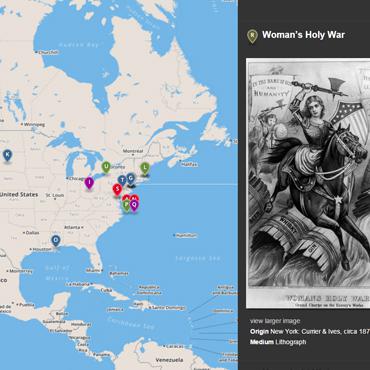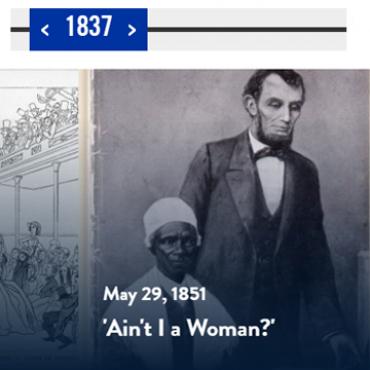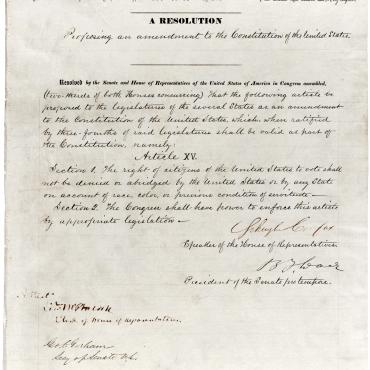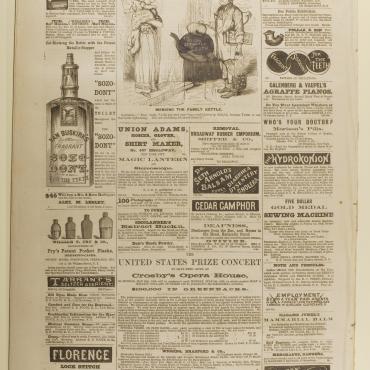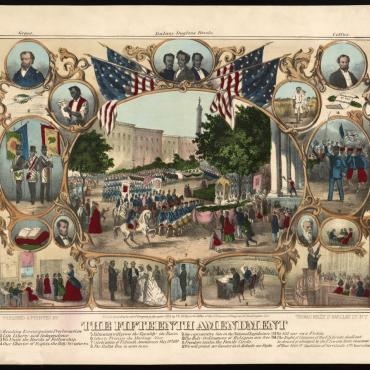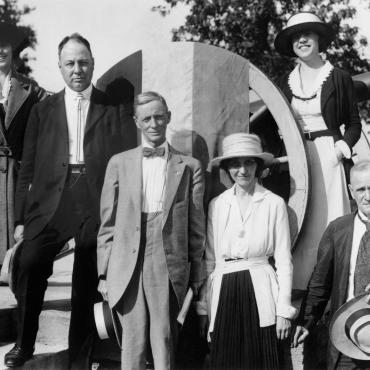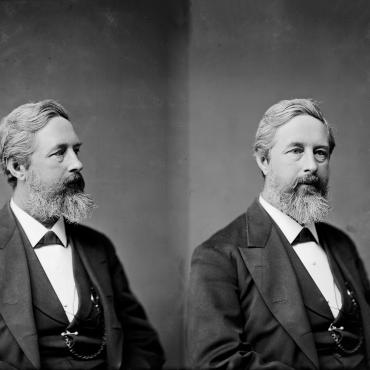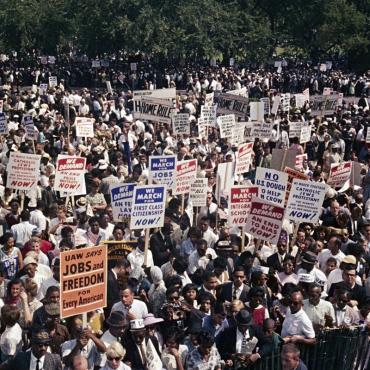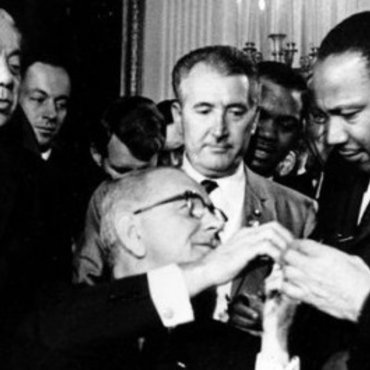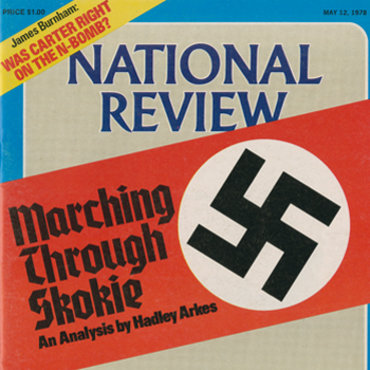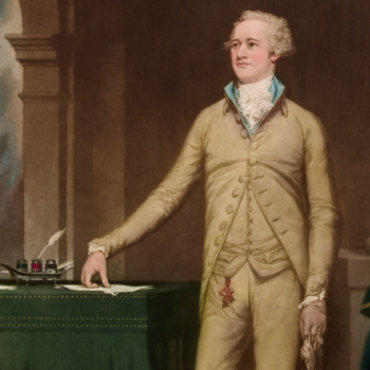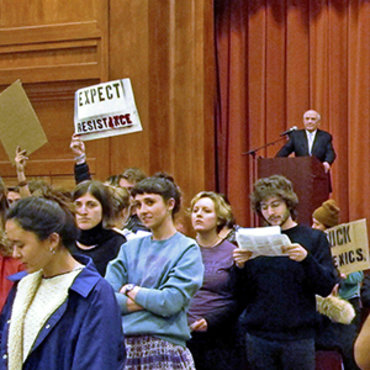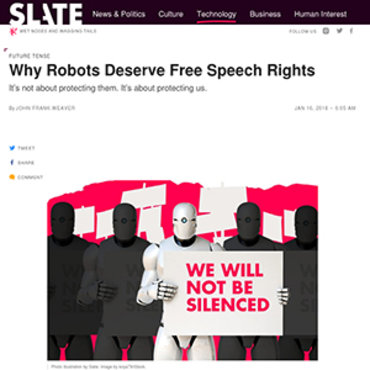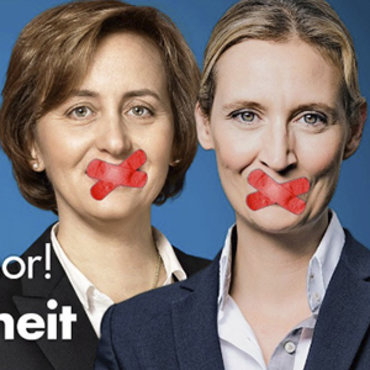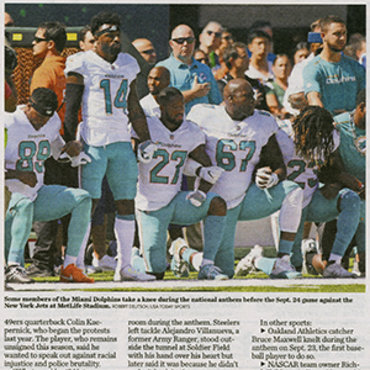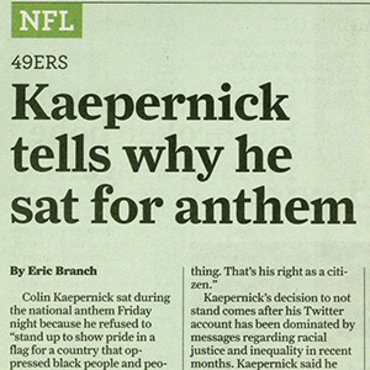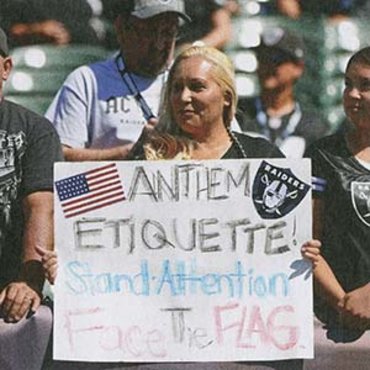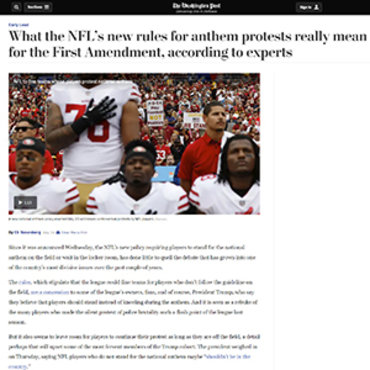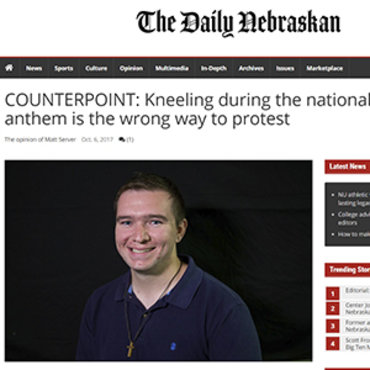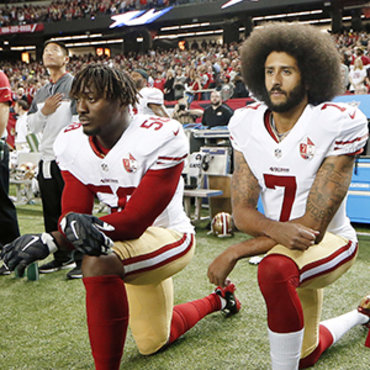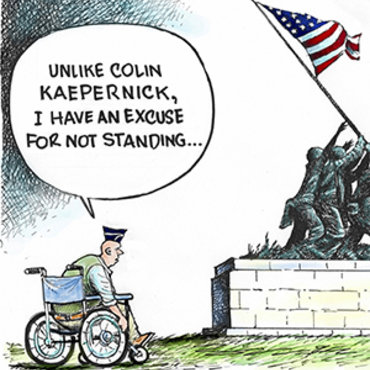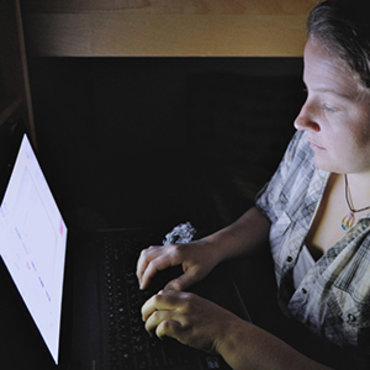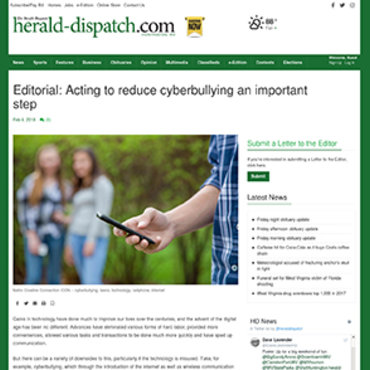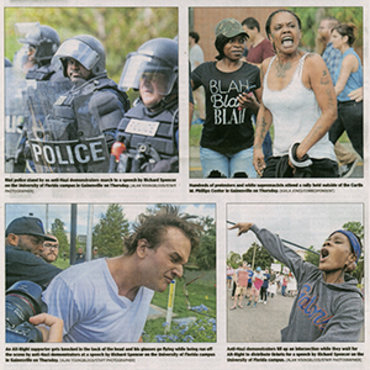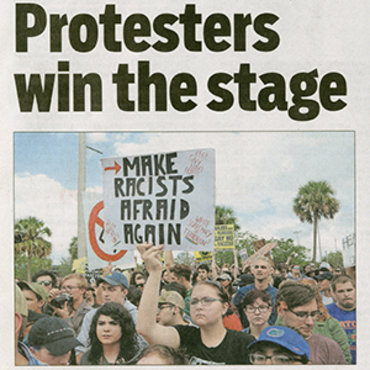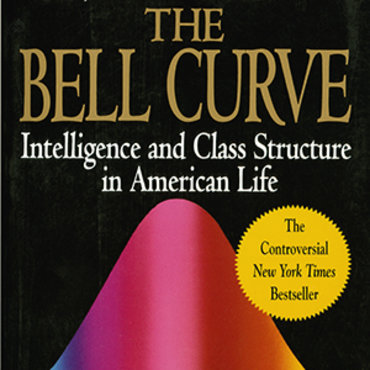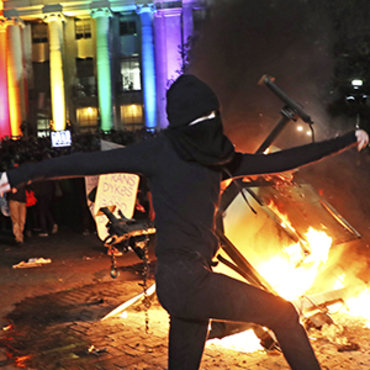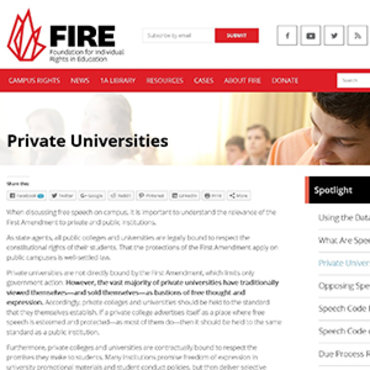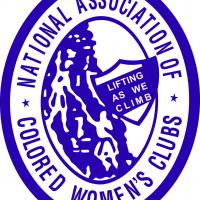
The First Amendment in Action Today
Students research an individual or group using the First Amendment to solve a community issue, then turn their findings into digital posters.
Get even more great free content!
This content contains copyrighted material that requires a free NewseumED account.
Registration is fast, easy, and comes with 100% free access to our vast collection of videos, artifacts, interactive content, and more.
NewseumED is provided as a free educational resource and contains copyrighted material. Registration is required for full access. Signing up is simple and free.
With a free NewseumED account, you can:
- Watch timely and informative videos
- Access expertly crafted lesson plans
- Download an array of classroom resources
- and much more!
- Civil Rights
- Constitution
- Current Events
- Women's Rights
- 7-12
(Note: For more support, see expanded procedure in downloadable lesson plan.)
- As a class, brainstorm local, national and international issues they care about, like access to public transportation, homelessness or the international refugee crisis. Chart their ideas on the board.
- Ask the class if they know of any groups in the U.S. addressing those issues. Students should describe what they know about the groups’ efforts and identify how they use the First Amendment to achieve their goals.
- Distribute the worksheet and show students the reports in “The Freedom to Make a Change Posters” Pinterest board as models for their class projects. Then, individually or in small groups, students select one of those issues to research in depth to see how the First Amendment can be used to create social change today.
- Once research is complete, students create a digital report of their findings.
- Researching the First Amendment Today worksheet (download), one per student or small group
- The First Amendment in Action Today template (download), one per student or small group
- Internet access
Students present their projects to their classmates and discuss their findings. Prompts include:
- Which First Amendment freedoms do you see being used most frequently? Why do you think this is?
- Based on what you’ve seen in these reports, which First Amendment freedom(s) is/are the least important when working to change a community? The nation? The world? Explain.
- Did you discover any common strategies or tactics being used by many different individuals or groups to address diverse types of problems?
- What would these individuals’/groups’ efforts look like if they did not have the ability to exercise their First Amendment freedoms?
- Choose a few specific examples of groups/individuals who have been successful in addressing their issue. What characteristics do these groups/ individuals share? How has the First Amendment played a role in their efforts?
- Choose a few specific examples of groups/individuals that have struggled to achieve their goals. What would you do differently to improve or expand the impact this group is having on this issue? Explain how the First Amendment would play a part in your plan.
Analyzing Obstacles: Have students list the types of challenges that the groups they profiled encountered when advocating for change. Discuss their findings and attempt to sort them into categories of types of obstacles. (Possible category suggestions: geographical, political, economic, etc.) Then create a corresponding chart of the possible types of solutions that can overcome each of these challenge categories. Which type of obstacle is the most common? The least common? Which type of obstacle is the easiest to address? The most difficult?
-
Common Core State Standards: CCSS.ELA-LITERACY.CCRA.SL.1
Prepare for and participate effectively in a range of conversations and collaborations with diverse partners, building on others' ideas and expressing their own clearly and persuasively. -
Common Core State Standards: CCSS.ELA-LITERACY.CCRA.SL.2
Integrate and evaluate information presented in diverse media and formats, including visually, quantitatively, and orally. -
Common Core State Standards: CCSS.ELA-LITERACY.CCRA.SL.5
Make strategic use of digital media and visual displays of data to express information and enhance understanding of presentations.
-
ISTE: 3a. Knowledge Constructor
Students plan and employ effective research strategies to locate information and other resources. -
ISTE: 3c. Knowledge Constructor
Students create collections of artifacts that demonstrate meaningful connections or conclusions.
-
National Center for History in the Schools: NCHS.Historical Thinking.5
A. Identify issues and problems in the past. B. Marshal evidence of antecedent circumstances. C. Identify relevant historical antecedents. D. Evaluate alternative courses of action. E. Formulate a position or course of action on an issue. F. Evaluate the implementation of a decision.
-
National Council of Teachers of English: NCTE.7
Students conduct research on issues and interests by generating ideas and questions, and by posing problems. They gather, evaluate, and synthesize data from a variety of sources (e.g., print and non-print texts, artifacts, people) to communicate their discoveries in ways that suit their purpose and audience. -
National Council of Teachers of English: NCTE.8
Students use a variety of technological and information resources (e.g., libraries, databases, computer networks, video) to gather and synthesize information and to create and communicate knowledge.
-
Center for Civic Education: CCE.V
A. What is citizenship? B. What are the rights of citizens? C. What are the responsibilities of citizens? D. What civic dispositions or traits of private and public character are important to the preservation and improvement of American constitutional democracy? E. How can citizens take part in civic life?
-
NCSS Curriculum Standards: NCSS 1
Learners will understand how human beings create, learn, share and adapt to culture. -
NCSS Curriculum Standards: NCSS 2
Learners examine the institutions, values and beliefs of people in the past, acquire skills in historical inquiry and interpretation, and gain an understanding of how important historical events and developments have shaped the modern world. -
NCSS Curriculum Standards: NCSS 5
Students know how institutions are formed, maintained and changed, and understand how they influence individuals, groups and other institutions. -
NCSS Curriculum Standards: NCSS 6
Learners will develop an understanding of the principles, processes, structures and institutions of government, and examine how power and authority are or have been obtained in various systems of government. -
NCSS Curriculum Standards: NCSS 10
Learning how to apply civic ideals to inform civic action is essential to participation in a democracy and support for the common good.
